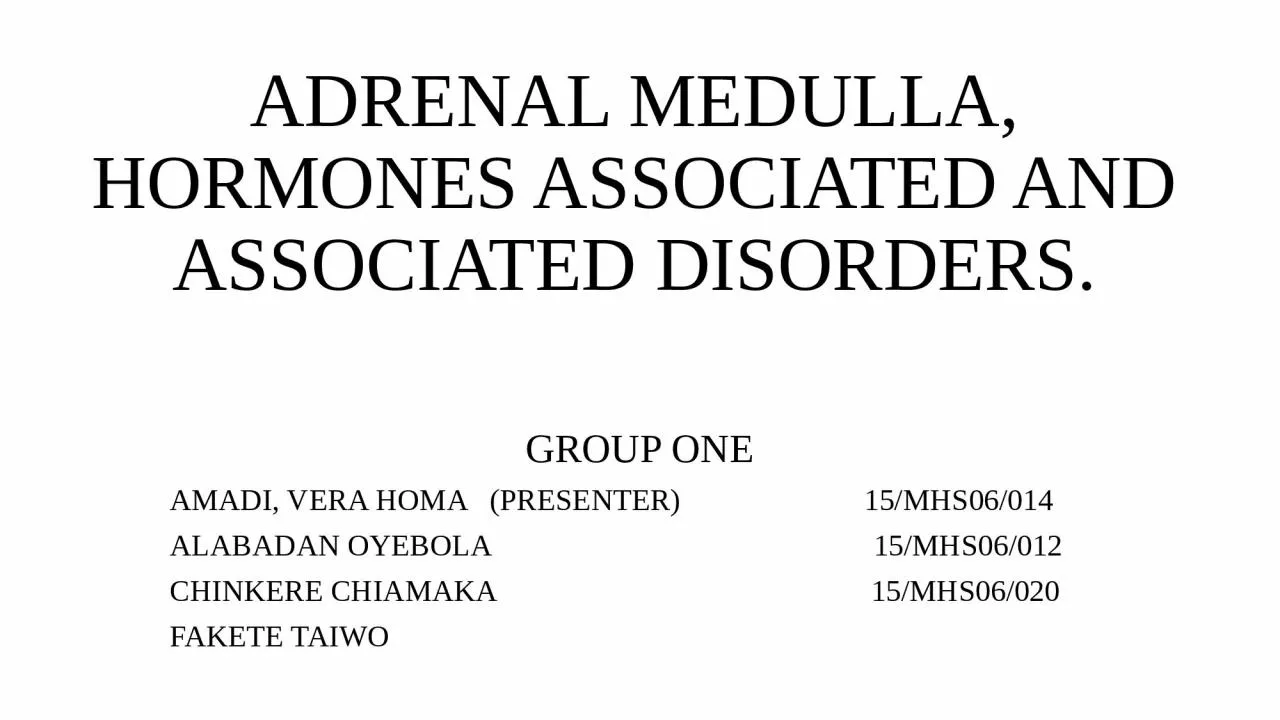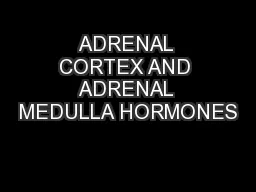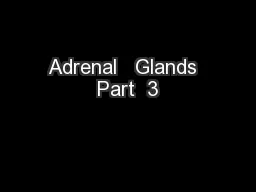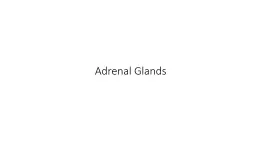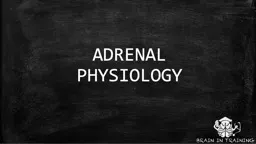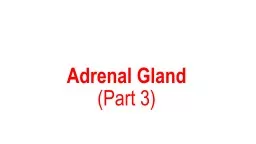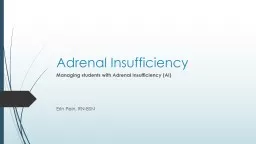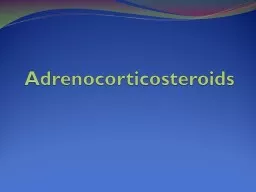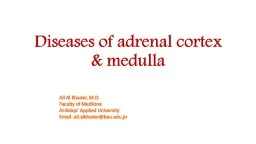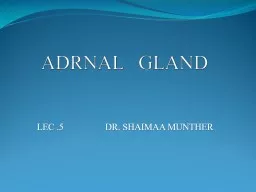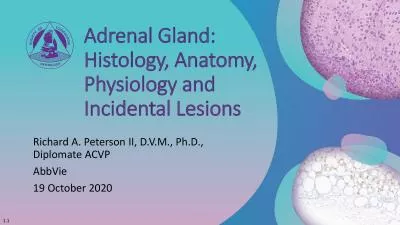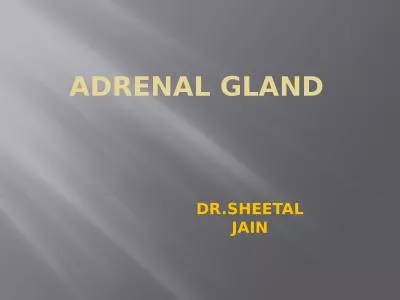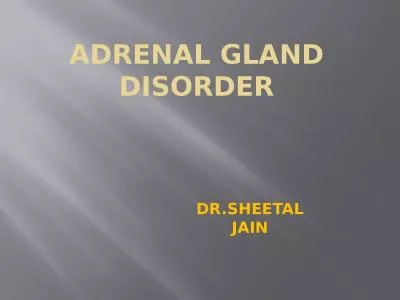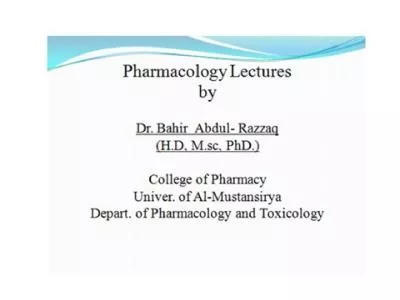PPT-ADRENAL MEDULLA, HORMONES ASSOCIATED AND ASSOCIATED DISORDERS.
Author : ani | Published Date : 2022-06-15
GROUP ONE AMADI VERA HOMA PRESENTER 15MHS06014 ALABADAN OYEBOLA 15MHS06012 CHINKERE CHIAMAKA 15MHS06020
Presentation Embed Code
Download Presentation
Download Presentation The PPT/PDF document "ADRENAL MEDULLA, HORMONES ASSOCIATED AND..." is the property of its rightful owner. Permission is granted to download and print the materials on this website for personal, non-commercial use only, and to display it on your personal computer provided you do not modify the materials and that you retain all copyright notices contained in the materials. By downloading content from our website, you accept the terms of this agreement.
ADRENAL MEDULLA, HORMONES ASSOCIATED AND ASSOCIATED DISORDERS.: Transcript
Download Rules Of Document
"ADRENAL MEDULLA, HORMONES ASSOCIATED AND ASSOCIATED DISORDERS."The content belongs to its owner. You may download and print it for personal use, without modification, and keep all copyright notices. By downloading, you agree to these terms.
Related Documents

